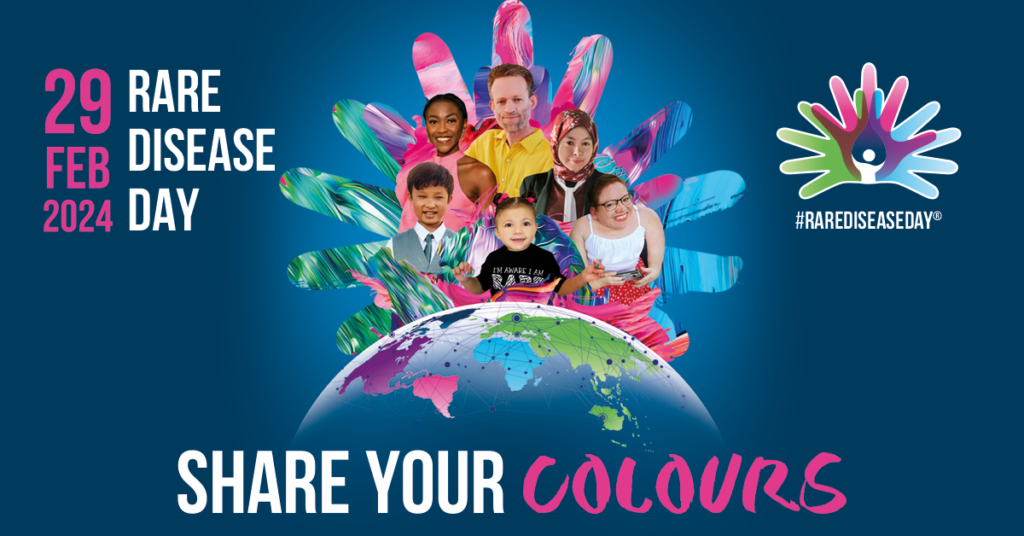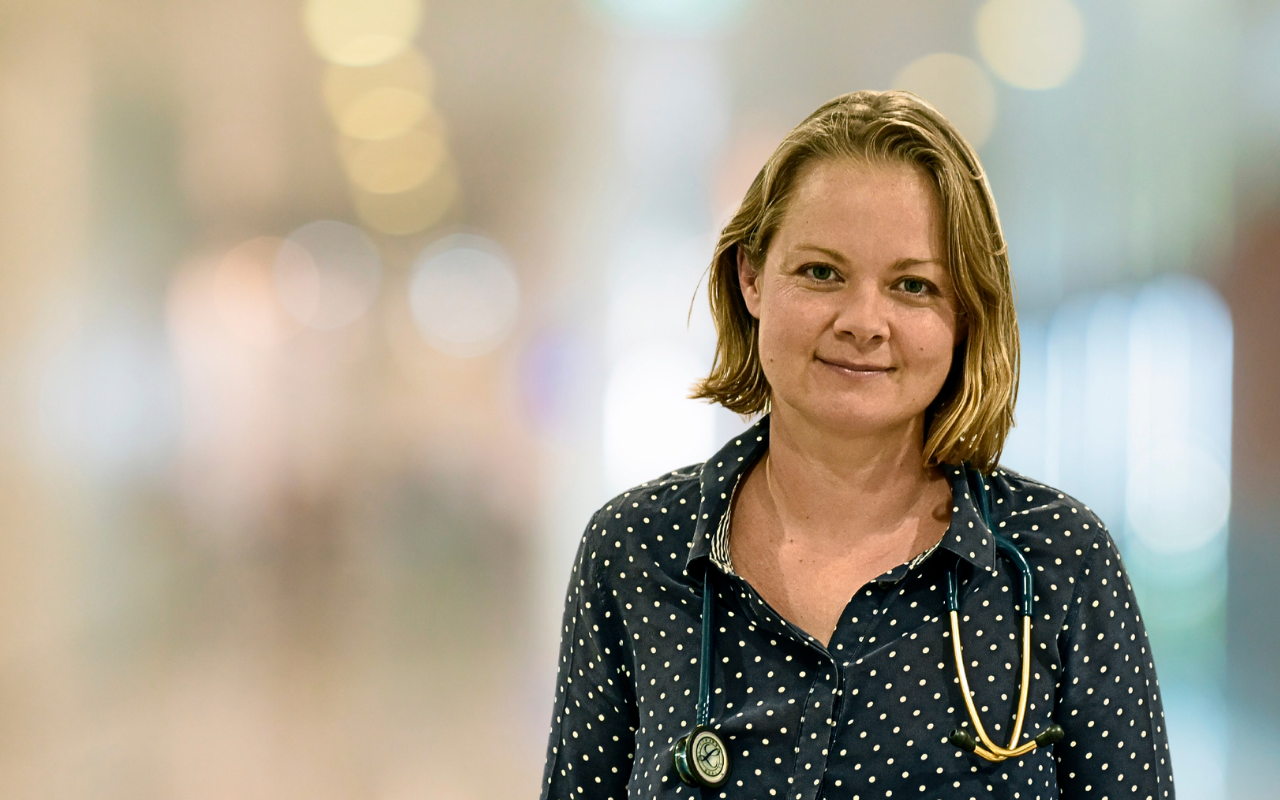The last day of February each year is Rare Disease Day, a day to raise awareness and drive change for the 300 million people worldwide living with a rare disease.
This year, Rare Disease Day falls on the rarest day of the year, 29 February. Rare conditions are a public health priority; as recognised in the first United Nations resolution on Addressing the challenges of persons living with a rare disease and their families.
A rare condition is defined as a disease that affects no more than one in 2000 people. It may be a genetic condition you are familiar with, such as cystic fibrosis or fragile X syndrome, or one you are much less likely to have heard of, such as Kleefstra syndrome or Coffin–Siris syndrome. A rare disease may also be a rare autoimmune condition such as scleroderma, a rare infection such as Barmah Forest virus, or a rare cancer such as mesothelioma.
Individually rare, but collectively common, there are more than 7000 different rare diseases. An estimated 2 million Australians (8% of the population) live with rare disease.
Although each person’s experience of living with rare disease is unique, there are many shared challenges. Rare diseases affect people’s social and emotional health and wellbeing, their relationships, ability to work and plan for the future, and their finances. The rarity of these conditions means that individuals, their families and clinicians often struggle to find suitable health services, information, holistic care and support.

Many individuals experience an extended “diagnostic odyssey” before a diagnosis is finally found. For others, a diagnosis is never found. While a diagnosis provides an answer, it often brings further uncertainty, as little may be known about the condition.
Rare diseases account for around 60% of childhood deaths. Data from across the United States indicate that, cumulatively, inpatient costs are 50% higher and mortality rates are 13 times higher for children with rare diseases compared with children with all common conditions combined. Less than 5% of rare diseases currently have a curative treatment. But research is underfunded, and there is a paucity of investment in therapeutic development. Thus, there is a clear need for enhanced research, clinical trials, novel therapeutics, care pathways, and care coordination.
In 2020, the Australian Government launched the first nationally coordinated policy approach to address rare diseases in Australia, the National Strategic Action Plan for Rare Diseases. Rare Voices Australia (RVA), the national peak body for Australians living with rare disease, led the collaborative development of the Action Plan, which involved an extensive multistakeholder consultation process.
The Action Plan is a game changer. It has achieved cross-partisan support, and clearly articulates the priorities, actions, and implementation steps required to achieve the best possible health and wellbeing outcomes for people living with rare disease.
As part of the collaborative implementation of the Action Plan, the Australian Government funded the RArEST Project, a partnership between RVA, the University of New South Wales, the University of Western Australia, Macquarie University, Lyfe Languages, and the Rare Care Clinical Centre of Expertise for Rare and Undiagnosed Diseases, Perth Children’s Hospital.
This three-year project, due for completion in June 2024, has codesigned a suite of resources to empower and support people living with rare disease, their clinicians, and advocacy groups. The project closely links to other national rare disease projects, including the Rare Awareness Rare Education (RARE) Portal and the RARE Helpline, which provides service navigation support to Australians living with rare and complex diseases.
In partnership with people living with rare disease, the RArEST Project is delivering:
- rare disease-focused mental health training and digital mental health resources;
- a Project ECHO® online community of clinical learning practice;
- a free online learning module Rare Disease 101 Australia — this is a Royal Australian College of General Practitioners (RACGP)-approved continued professional development (CPD) activity under the RACGP CPD Program;
- a rare disease module on the Lyfe Languages Indigenous language medical and scientific platform;
- rare disease case-based learning for GPs in the RACGP check activity;
- an Australian Rare Disease Organisation Community of Practice;
- a multistakeholder toolkit; and
- a series of health system simulation workshops.
This Rare Disease Day, the RArEST Project will launch Australia’s first National Recommendations for Rare Disease Health Care. Eight practical recommendations, with embedded resources and educational courses, were developed by a multidisciplinary team that included GPs, specialist clinicians, nurses, educators, rare disease advocates, and academics, including experts in culturally appropriate Aboriginal and Torres Strait Islander and culturally and linguistically diverse health care.
Extensive consultation with a stakeholder reference group comprising 12 people living with rare disease ensured that the Recommendations align with their key priorities. Quotes from these individuals embed lived experience into the Recommendations. The Recommendations have received positive feedback from evaluating health professionals and people living with rare disease alike. So far, they have been endorsed by RVA and nine national colleges and bodies, and have been officially recognised as an Accepted Clinical Resource by the RACGP.
As the RArEST Project nears its conclusion, it is important to reiterate how much the authentic codesign process has ensured resources remain focused on and driven by the tangible needs of Australians living with rare disease.
Although much has been achieved by Australia’s rare disease sector, there is a long way to go to improve health and wellbeing outcomes for Australians living with rare disease. One of the key calls in a pre-budget submission to parliament from RVA was for the development of a workforce grant to progress Centres of Expertise. Rare Disease Centres of Expertise are growing globally; for example, in Europe and the US, and are called for by the World Health Organization Global Network for Rare Diseases.
Imagine if Australia had more rare disease Centres of Expertise; it would improve equity of access to expert, evidence-based care, as well as robust data collection and research, including to clinical trials and novel therapeutics. Centres of Expertise embed education and training, reduce fragmented care, and support local clinicians to deliver expert, holistic care close to home. Moreover, by partnering with people living with rare disease, they ensure care is person-centred and strengths-based.
Rare disease care is everyone’s business and more systematic approaches to these conditions will no doubt transform the lives of all Australians living with rare disease and their families.
Dr (Elizabeth) Emma Palmer is a Clinical Geneticist at Sydney Children’s Hospitals Network Randwick and Senior Clinical Lecturer within the Discipline of Paediatrics and Child Health in the School of Clinical Medicine at UNSW Sydney.
Nicole Millis is Chief Executive Officer at Rare Voices Australia.
Professor Michelle Farrar is a Paediatric Neurologist at Sydney Children’s Hospital Randwick, and Professor within the Discipline of Paediatrics and Child Health in the School of Clinical Medicine at UNSW Sydney.
Professor Yvonne Zurynski is Professor of Health System Sustainability at Macquarie University, Sydney.
Professor Gareth Baynam is Director of the Rare Care Centre at Perth Children’s Hospital and Clinical Professor at the University of Western Australia (UWA).
Professor Adam Jaffé is John Beveridge Professor of Paediatrics, and Head, Discipline of Paediatrics and Child Health in the School of Clinical Medicine at UNSW Sydney.
The RArEST Consortium includes Dr (Elizabeth) Emma Palmer, Nicole Millis, Professor Michelle Farrar, Professor Yvonne Zurynski, Professor Gareth Baynam, Professor Adam Jaffé, Dr Lauren McKnight (UNSW Sydney), Krista Recsei (UNSW Sydney), Natalie Roberts (UNSW Sydney), Louise Healy (RVA), Sarah Cannata (RVA), Yarlalu Thomas (UWA and Rare Care Centre, Perth Children’s Hospital), Christina Rojas (Macquarie University) and Isabella Hixon (RVA).
The statements or opinions expressed in this article reflect the views of the authors and do not necessarily represent the official policy of the AMA, the MJA or InSight+ unless so stated.
Subscribe to the free InSight+ weekly newsletter here. It is available to all readers, not just registered medical practitioners.
If you would like to submit an article for consideration, send a Word version to mjainsight-editor@ampco.com.au.

 more_vert
more_vert